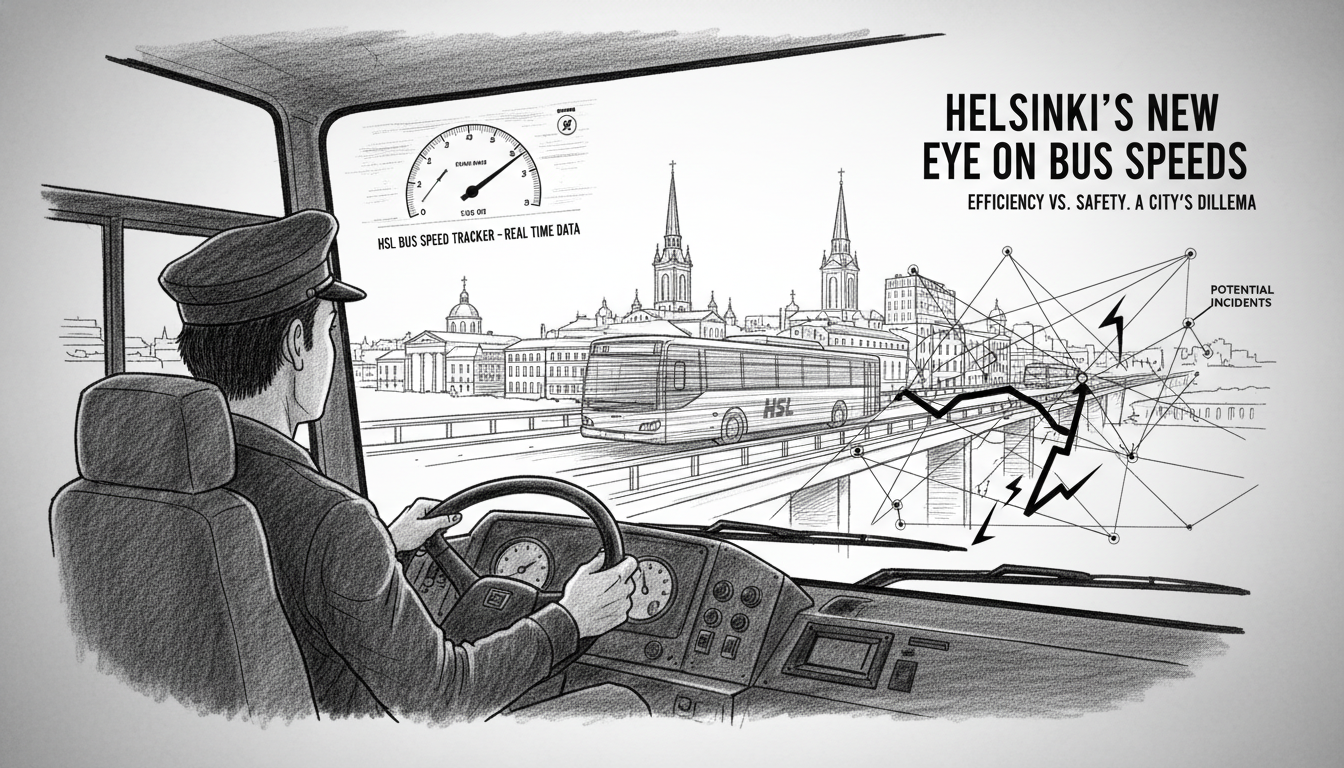A new website called 2fast2hsl.live shows Helsinki Regional Transport buses speeding across the city. The platform displays real-time speed violations on an interactive map. It combines open data from HSL with road speed limits from the Finnish Transport Infrastructure Agency.
The creator says they want to start a conversation about schedule pressures facing bus drivers. They got the idea after seeing a bus speed past a child at a crosswalk. The developer notes this happens surprisingly often in their neighborhood.
One example shows bus number 59 traveling from Malminkartano to Herttoniemen metro station. On Friday evening at 5:34 PM, the bus crossed the Naurissaari bridge between Kulosaari and Herttoniemi. The speed limit on the bridge is 40 kilometers per hour. The map application showed the bus traveling at 67 kilometers per hour. If accurate, this represents nearly 30 kilometers per hour over the limit. This bus was not the only one exceeding speed limits that evening.
The website's creator emphasizes that not every speed observation is necessarily accurate. For example, on Itäväylä highway, where bus 59 travels toward Herttoniemi, the system sometimes picks up speed limits from adjacent roads. They describe the site as an opening for discussion about HSL schedules that may pressure drivers to speed.
HSL information manager Joona Packalén responded to questions about the website and its speed observations. He stated that HSL does not use this data for speed enforcement because it is not completely reliable. The transport authority primarily uses bus speed and location data for passenger needs. This includes estimating arrival times and tracking delays or canceled routes.
Packalén explained that HSL discusses speeding incidents with transport operators when they emerge through other channels. These include the operators' own monitoring systems or passenger feedback. Similar websites using HSL's open data have appeared before, though none have been as comprehensive as this new platform.
HSL designs its schedules and routes to be achievable within speed limits, according to Packalén. The authority adds buffer time to schedules well in advance of major street repairs. Recent examples include the major renovation on Mäkelänkatu that began this week.
For temporary obstacles like bad weather and slippery conditions, transport operators and drivers receive clear guidance. They should respond by running late rather than speeding and risking safety. Packalén noted that skipping some trips or operating shortened routes happens regularly to catch up with schedules.
This situation highlights the tension between efficient public transportation and road safety. While the website provides fascinating public data access, its accuracy limitations remind us that real-world traffic monitoring requires more sophisticated systems. The discussion about driver pressures remains relevant for cities worldwide striving to balance transit efficiency with community safety.

